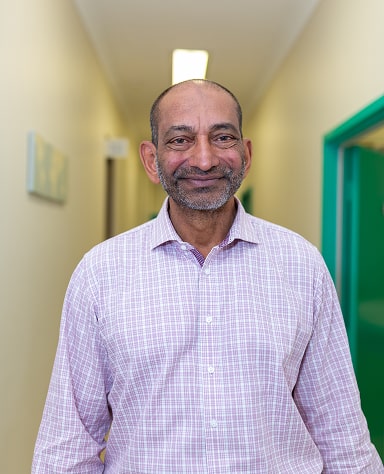Table of Contents
Post-vasectomy pain syndrome (PVPS) is persistent testicular discomfort following a vasectomy. Pain may arise shortly after the procedure or even months later; PVPS is diagnosed if it persists for three months or longer. While most men recover without complications, a small fraction of patients experience chronic pain, the defining feature of this condition.
Types of Post-Vasectomy Pain
Vasectomy is a reliable form of long-term contraception. However, some men may experience pain ranging from mild to chronic after the procedure. Discomfort can appear immediately or develop later due to minor surgical trauma or inflammation. A thorough understanding of these types of pain helps identify causes and explore management options if needed.
- Vasectomy Procedural Pain
Although a vasectomy is a minor procedure, some discomfort can occur. Local anaesthesia is used to reduce pain, although additional doses may be needed for sensitive patients. Despite testicular sensitivity, the procedure is minimally invasive, and most men recover quickly with little to no lasting discomfort. - Granuloma Pain
Sperm leakage after vasectomy can cause inflamed lumps called sperm granulomas. Studies show sperm granulomas occur in approximately 40% of men after vasectomy; however, only a small fraction (around 1–3%) experience significant pain from them. This inflammation can lead to discomfort, which is usually managed with over-the-counter pain relievers. In rare cases, persistent pain may require steroid treatment to reduce inflammation. - Congestive Epididymitis
Some men develop scrotal pain and swelling months or years after a vasectomy due to congestive epididymitis. This is caused by pressure from continuous sperm cell production. Symptoms often improve over time with conservative treatments like ice application and pain relievers. In rare cases, surgical options like vasectomy reversal may be needed if pain persists beyond three months.
Causes of Chronic Pain After a Vasectomy
Chronic pain after a vasectomy procedure, known as post-vasectomy pain syndrome (PVPS), can result from various factors:
- Inflammation or Scarring:
Tissue irritation from the procedure may affect surrounding nerves, leading to persistent discomfort. - Infections:
Infections causing chronic PVPS are exceptionally rare; most postoperative infections are acute and resolve quickly with treatment. However, infections at the surgical site can cause prolonged pain if not properly managed. - Sperm Leakage:
This can trigger inflammatory reactions, such as granulomas, contributing to persistent pain. - Individual Factors:
Heightened pain sensitivity or pre-existing conditions may predispose some men to chronic pain. - Vasectomy Technique:
Some studies suggest that the choice of vasectomy technique (open-ended vs. closed-ended) may influence post-procedure pressure buildup, potentially impacting long-term comfort. However, further research is needed to establish a definitive link.
Post-Vasectomy Pain Syndrome: A Chronic Condition
Post-vasectomy pain syndrome (PVPS) is a long-term condition marked by persistent testicular pain lasting months or years after a vasectomy. Pain levels vary from mild to severe, potentially disrupting daily life. The exact causes are not fully understood, but contributing factors include nerve damage, inflammation, or pressure buildup. To manage symptoms and improve quality of life, treatment options range from medications and lifestyle changes to physical therapy and vasectomy reversal.
Relief Options for Post-Vasectomy Pain
Depending on the severity and cause, post-vasectomy pain syndrome can be managed through various approaches. Anti-inflammatory medications help reduce pain and swelling, while ice packs and rest ease discomfort. If pain is related to pressure buildup, a vasectomy reversal may help address pain by restoring sperm flow. In cases where symptoms persist despite these measures, surgical interventions like removing sperm granulomas or addressing nerve entrapment may offer further relief.
Managing Chronic Pain After a Vasectomy
With your healthcare provider’s guidance, chronic testicular pain after vasectomy can be managed through medications, physical therapy, or surgery. Lifestyle changes, such as regular exercise (e.g., walking and swimming) and stress management (e.g., meditation and deep breathing exercises), can further reduce discomfort. Additionally, avoiding activities like heavy lifting, strenuous exercise, and prolonged sitting may help prevent flare-ups.
To rule out possible infections contributing to pain, semen culture tests may be recommended. For men concerned about future fertility, storing sperm before the procedure is an option for use in assisted reproductive treatments if needed.
Final Thoughts
While post-vasectomy pain syndrome is uncommon, it can have a significant impact on the quality of life for those affected. For men experiencing it, consulting a healthcare provider is essential for proper diagnosis and management. By understanding the potential causes and exploring available medical treatment options, patients can take proactive steps to manage their symptoms. Early intervention and a tailored treatment plan can greatly improve long-term comfort and overall well-being.
Frequently Asked Questions
Got a question we missed? Contact Us
What are the main symptoms of post-vasectomy pain syndrome (PVPS)?
How common is PVPS among men who undergo vasectomies?
PVPS is relatively uncommon, affecting approximately 5% of men who undergo vasectomies. While temporary discomfort is normal shortly after the procedure, PVPS refers to chronic pain lasting three months or longer.
The likelihood of developing PVPS varies depending on factors like surgical technique and individual responses. Although most men recover without complications, a small percentage may experience persistent symptoms that require medical attention and treatment.
What causes chronic pain in PVPS, and how is it diagnosed?
Chronic pain in PVPS can arise from several factors, including nerve irritation, inflammation, or sperm leakage that leads to granuloma formation. Additionally, continued sperm production may cause pressure buildup in the epididymis, resulting in discomfort. Scar tissue from the procedure can further irritate surrounding nerves, contributing to long-lasting pain.
To confirm a PVPS diagnosis, healthcare providers look for testicular or scrotal pain that persists for three months or longer after a vasectomy. Diagnosis usually begins with a physical examination, checking for tenderness, swelling, or sperm granulomas, and a review of the patient’s medical history. Additional tests, such as ultrasound or semen cultures, may be conducted to rule out infections or structural problems. In some cases, a nerve block test may be performed to determine if pain originates from nerve involvement.
Are there effective treatments available for managing PVPS?
Yes, various treatments can help manage PVPS, depending on the underlying cause and intensity of symptoms. Pain relief may be achieved through:
- Medications:
Anti-inflammatory drugs and neuropathic pain medications may help manage discomfort. - Physiotherapy:
Pelvic floor therapy and nerve desensitisation techniques can be used to address pain. - Nerve Stimulation:
Transcutaneous electrical nerve stimulation (TENS) therapy and peripheral nerve blocks may provide relief. - Lifestyle Modifications:
Applying cold compresses, limiting strenuous activity, and avoiding prolonged sitting can help reduce symptoms.
In more severe cases, procedures like vasectomy reversal or removal of blockages may be considered.
Can PVPS be prevented with specific surgical techniques?
While PVPS cannot be entirely prevented, certain surgical techniques may decrease the risk. The open-ended vasectomy method, which leaves one end of the vas deferens unsealed, may potentially reduce PVPS risk by lowering pressure buildup and the likelihood of chronic pain. Using precise, minimally invasive techniques also helps reduce nerve damage and inflammation.
Additionally, proper postoperative care and early management of complications may minimise the chances of developing PVPS. However, individual responses to the procedure can still vary.
When should a patient consult a doctor about persistent testicular pain after a vasectomy?
A patient should consult a doctor if testicular pain lasts more than three months after a vasectomy, as this may indicate PVPS. However, seek immediate medical attention if pain worsens rapidly, becomes severe, or is accompanied by fever, swelling, or redness. This may indicate infection or other complications.
Pain experienced during ejaculation or routine activities that affect quality of life should also be addressed promptly. Early evaluation not only helps identify underlying causes but also guides effective treatment options to manage symptoms.



